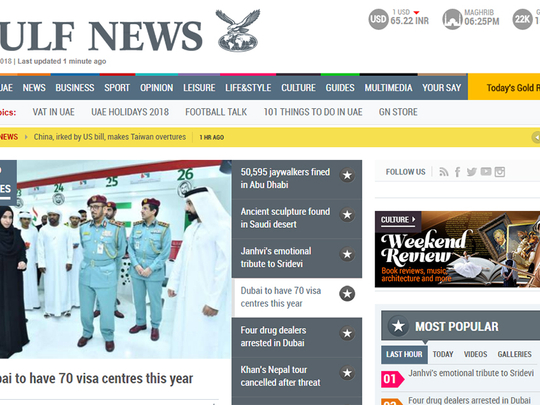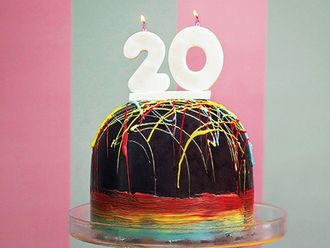
Dubai: The #YoungEditors initiative, launched by Gulf News and the Knowledge and Human Development Authority (KHDA) in Dubai, starts on Tuesday.
The initiative, which takes the form of a competition, allows young people from 16 schools to report and write, design and produce their own news page.
Each Tuesday, for 16 weeks, a page featuring reports by students from one school will appear in the Nation section of Gulf News.
After all the entries are in, a judging panel will judge each entry on a set of criteria, including on field reporting and quality of writing [and pick a winner from that final list of 16 published entries.]
The initiative was first announced in October 2017. Speaking during the announcement then, Abdul Hamid Ahmad, Gulf News Editor-in-Chief and Executive Director Publications, said: “We at Gulf News are always interested in future readers and that is why we had launched ‘Notes’ and ‘Fun Day’ supplements. This initiative fits very well with our vision for future of journalism and the challenges that traditional media faces.”
Dr Abdullah Al Karam, director-general of the KHDA, had said: “We are very glad today to partner with Gulf News and the private schools in Dubai to get students more involved and engaged with news, especially with Gulf News, where they will be writing on a weekly basis, and also be giving their comments and reviews. This initiative is to engage the children more in today’s stories and the way of writing, reading, participating and commenting on that.”
The initiative can be supported by sponsoring Gulf News subscriptions by schools and universities across the country. Gulf News will match every subscription sponsored through this programme. To support the initiative, readers can call 8004585 or 044067170, or email ndevadia@gulfnews.com.
Rules for submission
There can only be one entry per school, which would include reports supported by pictures or original artwork.
The submissions must be made by the school, not individually by students, on behalf of the student editorial team that created the content. The details of each team member, such as name, age, and class, must be included in the entry.
The total word count of all stories and articles on the page combined should not exceed 1,400. The submission should have a minimum of two stories or articles and a maximum of five.
All stories and write-ups on the page need to be non-fiction and factually sourced and based — works of fiction or poetry will not be considered as entries.
Schools should also email a copy of any artwork, graphics, or illustrations used in conjunction with the stories. Meanwhile, copies of photographs used on the page, which must also be emailed, must not exceed 150 dpi (dots per inch) and should be between 1MB and 5MB in size.
In the submissions, there should also be one story or article that embodies, espouses or symbolises the values of the late Shaikh Zayed Bin Sultan Al Nahyan, the first president of the UAE.
The UAE leadership has selected 2018 as the Year of Zayed, marking 100 years since his birth.
Also, each school must submit a student-made video of how the project (the page) took shape and came together as team effort. On the day their page is published, the video created by the students from their school will be used to promote their page on the Facebook page of Gulf News.
Send your stories, photographs and videos to readers@gulfnews.com
The deadline for submissions is March 14.
The winning school will be awarded three internships at Gulf News. There will also be additional prizes from the KHDA.
Selection criteria
Innovation/Originality: The submission by schools must be distinguished by a high degree of innovative thinking in terms of its content and purpose. The more evident the original approach and treatment of the newsletter in its communicative power, the better.
Diversity of content: The newsletter must be marked by a range of topics within the theme that is picked by the school. A high degree of diverse ideas presented in the newsletter will aid its qualitative assessment.
Visuals: These must be of high quality, interesting and capture the ideas being explored on the page.
Multimedia content: A short video on the making of the newsletter. Schools are free to devise their own script and presentation for these videos.
General submission guidelines
Try and have a thematic consistency for the page (schools can pick any topic such as innovation, reading culture, student wellness etc).
Include visuals, artworks and multimedia content.
‘Meet the editorial team’ component on the page — show us your editorial stars and tell us a bit about them on the page.
Video content showing behind-the-scenes making of the newsletter.








